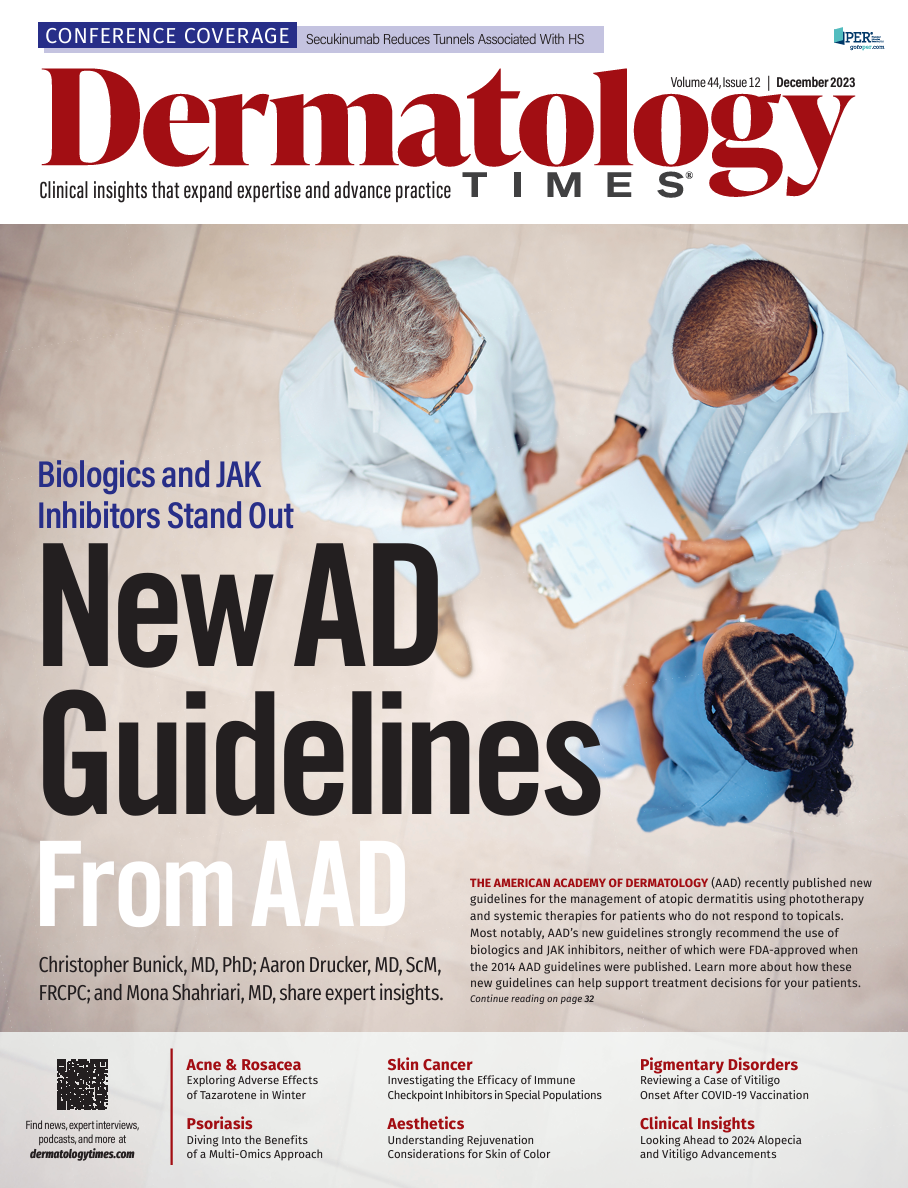- Case-Based Roundtable
- General Dermatology
- Eczema
- Chronic Hand Eczema
- Alopecia
- Aesthetics
- Vitiligo
- COVID-19
- Actinic Keratosis
- Precision Medicine and Biologics
- Rare Disease
- Wound Care
- Rosacea
- Psoriasis
- Psoriatic Arthritis
- Atopic Dermatitis
- Melasma
- NP and PA
- Skin Cancer
- Hidradenitis Suppurativa
- Drug Watch
- Pigmentary Disorders
- Acne
- Pediatric Dermatology
- Practice Management
- Prurigo Nodularis
- Buy-and-Bill
News
Article
Dermatology Times
Reviewing Common Facial, Bodily Pigmented Dermatoses in Varying Clinical Presentations
Author(s):
Rebecca Vasquez, MD, presented a session on common, overlapping, and complex pigmented dermatoses.
Alessandro Grandini/Adobe Stock

At the 2023 Society of Dermatology Physician Assistants (SDPA) Annual Fall Dermatology Conference in Nashville, TN, Rebecca Vasquez, MD, presented a session titled, "Pigmented Dermatoses."
Vasquez discussed several clinical pearls related to different pigmentary conditions and concerns, from common disorders like tinea versicolor to lesser-known conditions like exogenous ochronosis. Knowledge and insights on these conditions can significantly impact patient care and management, Vasquez noted.
Tinea Versicolor
Tinea versicolor, commonly known as pityriasis versicolor, can be easily mistaken for other skin conditions. Characterized by discolored patches on the skin, often found on the chest, back, and upper arms, these lesions may be misdiagnosed due to their similarity to other conditions, notably cutaneous T-cell lymphoma (CTCL), Vasquez said.
CTCL, particularly the hypopigmented type, can manifest similarly to tinea versicolor. The commonly misdiagnosed mycosis fungoides subtype of CTCL can cause hypopigmentation. In lighter skin types, CTCL typically appears pink, whereas in individuals with skin of color, a mix of hypopigmentation and hyperpigmentation is observed.
It is essential, Vasquez emphasized, to maintain a high index of suspicion when dealing with hypopigmentation, especially in patients aged 55 and older, as this type of CTCL tends to have a highly progressive depigmentation process.
An intriguing aspect of CTCL is its relation to the immune system. Melanoma-associated leukoderma/vitiligo is connected to anti-melanoma immunity, targeting both healthy and malignant melanocytes. This depigmentation condition can occur spontaneously before or after melanoma detection and may even be an immune-related adverse effect following immune checkpoint inhibitor therapy. Depigmentation often affects sun-exposed areas and usually occurs approximately 9 months after treatment.
Idiopathic Guttate Hypomelanosis
Idiopathic guttate hypomelanosis (IGH) is a condition that predominantly affects individuals over 70 years old, irrespective of their skin tone. Characterized by small, white lesions delineated by skin furrows, this condition is quite distinct. Notably, hairs within these lesions retain their pigmentation, Vasquez explained.
While the exact cause of IGH is not fully understood, T-cell activation can lead to immune effects. It's been reported that over 60% of IGH patients develop these effects, with 30% to 50% experiencing them in the most affected areas of their skin. Intriguingly, there is a significant association between immune effects and the efficacy of immunotherapy. Melanoma-associated vitiligo (MAV) in immunotherapy is correlated with higher progression-free and overall survival. However, it's crucial to note that MAV treatment is not recommended, as it can suppress anti-melanocyte immunity, including against healthy melanocytes.
Melasma
Melasma is characterized by brown or gray patches on the face; patch coloration may vary from patient to patient based on skin tone. The most frequent presentation is centrofacial, though it can also appear on the malar and mandibular areas. Understanding the distinctions between melasma and other conditions is crucial for proper diagnosis and treatment, Vasquez said.
Pigmented contact dermatitis, notably Riehl's Melanosis, is often confused with melasma. This condition predominantly affects the forehead and temples and can be caused by use of topical minoxidil. Vasquez recommends suspending the use of the offending agent in order to manage this condition.
Drug-Induced Hyperpigmentation
Drug-induced hyperpigmentation has a slow onset that progresses over months or even years. This hyperpigmentation can extend beyond the jawline, tip of the nose, and lateral forehead. It is often associated with the use of certain medications, such as antimalarials, amiodarone, and cytotoxic drugs. In cases where drug-induced hyperpigmentation is suspected, discontinuation of the causative drugs is the recommended course of action, Vasquez said.
Exogenous ochronosis
Exogenous ochronosis (EO) shares a similar distribution with melasma, typically affecting the malar, temples, and lower cheeks. Unlike many skin conditions, EO has a genetic component, with an autosomal recessive pattern. Vasquez said that in order to manage EO, discontinuation of the triggering agents is vital.
Acanthosis nigricans
Acanthosis nigricans is characterized by thickened, darkened patches of skin. This condition usually affects the skin in a deep and prominent manner. Proper diagnosis and management of this condition are critical for patients' well-being, Vasquez concluded.
Reference
- Vasquez R. Pigmented dermatoses. Presented at: 2023 SDPA Annual Fall Dermatology Conference: October 26-29, 2023; Nashville, TN.
Make sure to keep up to date with the latest in coverage from the conference and subscribe to Dermatology Times to receive daily email updates.







